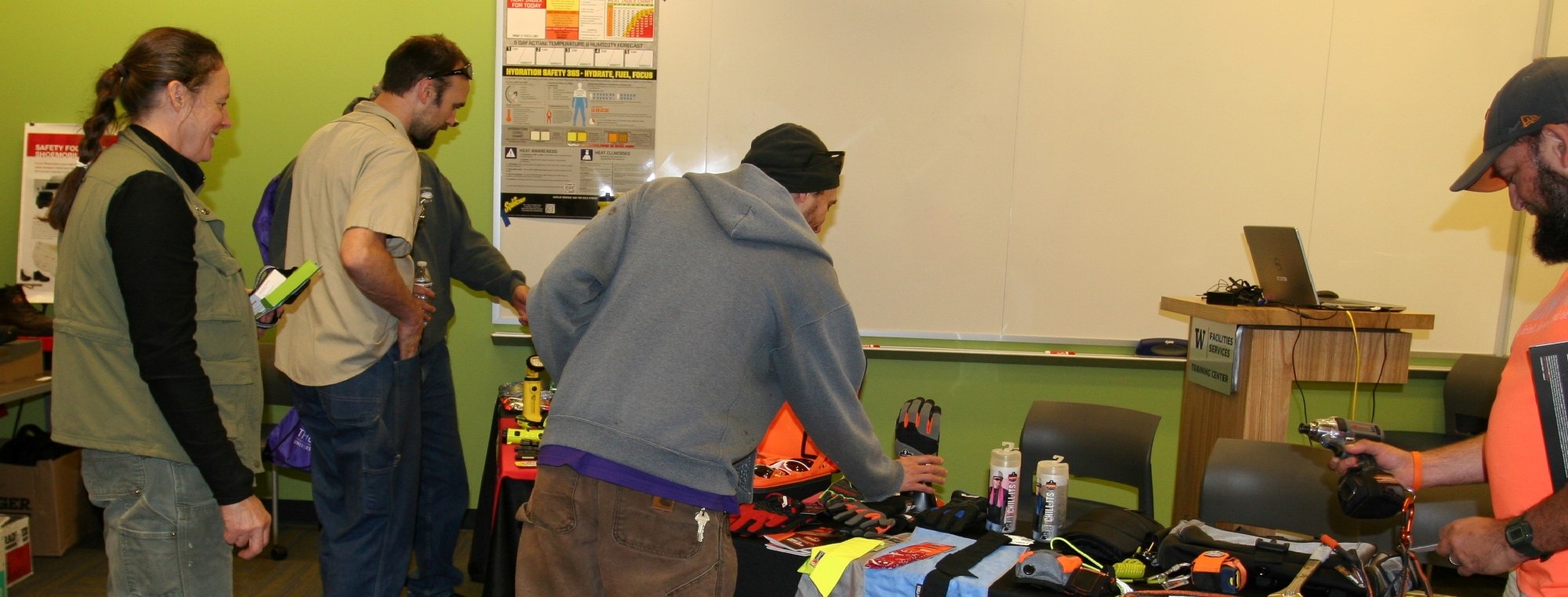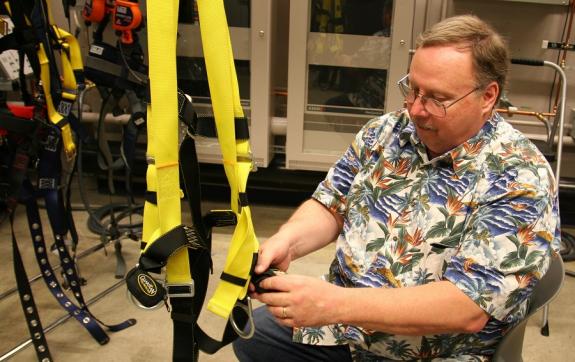Workplace safety goes high-tech

As technology becomes more sophisticated, companies and universities alike are identifying new, cutting-edge ways to utilize and improve safety methods and equipment to ensure the well-being of their workers. These methods are designed to keep employees safe every day at work, and are often the last line of defense against accidents.
For example, smart helmets and earmuffs can include systems designed for fast, effective communication in loud or low-visibility environments. Phone-based apps can send alerts about weather and emergency situations at a facility. Apps can also be used together with wearable sensors in order to notify people when they misuse a tool.
Facilities Services employees had a chance to learn more about these advances and try out the latest gear at the Personal Protective Equipment (PPE) open house held last month. Organized by Facilities Employee Services, the annual event brings together leading safety equipment vendors with employees from across FS who rely on safety gear every day. Some employees had the opportunity to wear military grade, anti-fog glasses, others to try on the lightest arc flash protection suit in the industry. The suit weighs in at just 11oz while dually providing flame resistance.
At one station, FES safety trainer Ron Fouty was helping demonstrate fall protection equipment. One aspect that has improved over the years has been changes in the way fall arrest is viewed. "Falls account for a vast number of fatalities in the industry", Fouty stated. "Technology has greatly improved. For instance, body belts are no longer acceptable, only full body harnesses are used. Harnesses distribute the impact from a fall throughout the body rather than focusing the energy at a persons waist line."
Even when wearing a harness, falls can result in serious injury. "After a person falls and they are suspended in their harness, circulation to a person's legs can be restricted," Fouty said. "That is why we require all harnesses be equipped with trauma straps." Trauma straps are a recent development. If a person falls, they can deploy the straps, which allow you to stand and take pressure off your lower extremities. "Emergency responders found that after a person falls, circulation can be cut off to the legs. Once the pressure of the legs is relieved, deoxygenated blood rushes back through the system. The result of that could be fatal."
Fouty has been a safety professional for over 41 years and says he enjoys the coaching, training, and learning that comes with it. “So much of it comes back to having a plan and understanding the processes. Seeing how the plan compares to a real life situation is an important step because scenarios emerge that were never planned for in the first place.”
National Safety Month
National Safety Month
Worker safety is important year around, but with June being National Safety Month, the National Safety Council is urging everyone to think of at least one change you can make to improve safety this month. For example, do you know where the nearest First Aid kit is located in your building?
It's also a good time to remember the resources available to the University of Washington community:
- Environmental Health & Safety is always a good place to start, particularly their Workplace Safety section.
- Not sure how to report work-related accidents and injuries? Learn more about UW procedures and policies and how to file reports online.
- Additionally, if anyone on campus has a safety concern that they believe could lead to an accident or injury, here is where to report it anonymously.
For more information on how to engage fellow co-workers, family or community in general safety practices, visit the National Safety Council’s webpage and get involved.




